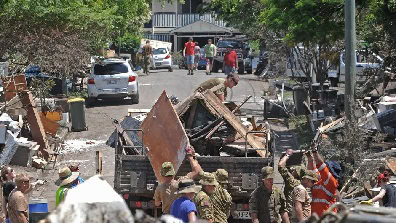Work health and safety when cleaning after storms and floods
During the Queensland’s storm season weather can be unpredictable and due to its sub-tropical climate, Queenslanders are prone to severe weather events, a variety of natural disasters and hazards.
It is common for Queensland towns to experience a number of severe weather events including:
- Flooding from rivers, creeks and king tides
- Storms with hail and damaging winds
- Bushfires
- Heat waves, dust storms and landslides.
Employers and workers involved in the storm and flood recovery efforts must still remember their obligations under Queensland’s health and safety laws.
These laws are in place to protect Queenslanders. By being vigilant and maintaining safety during this difficult time, you can help reduce the risk of death, injury and illness to yourself, your workers and others involved in the cleanup and repair effort.
Steps for planning to do work safely
- Check that an electricity clearance has been given before attempting to use it.
- Identify any likely asbestos containing materials or dangerous chemicals.
- Assess what work needs to be done.
- Work out the order of the work to be done so that new risks are not introduced, e.g. think about how you will get access to the areas where the work is to be done, or the possibility of creating instability from removing things in the wrong order.
- Consider what could go wrong during the cleanup and repair work.
- Work out what tools and equipment will be needed to do the work safely.
- Check the correct equipment is available and is in good working order.
- Check that the people required to operate the equipment have the right skills and competencies and ensure supervision of less skilled workers is available.
- Check that people allocated to perform work are not fatigued.
- Make sure that workers have the correct personal protective equipment (for example rubber-soled shoes, gloves, hats, sun protective clothing and high visibility vests) and it is worn correctly.
- Check that appropriate first aid, clean drinking water and hand hygiene measures are available and there is access to medical treatment in the event of an injury occurring.
- Check that there is access to toilet facilities.
- Highlight any counselling services available to staff and encourage their use.
Personal protective equipment
All parties must ensure that any work undertaken in flooded areas, or areas that have been subjected to flooding, that suitable personal protective equipment is available to prevent injuries such as cuts and scratches or infections from contaminated water.
In many cases protective clothing include such as long sleeve shirts and pants, suitable enclosed footwear, heavy work gloves and a hat, sunglasses and sunscreen.
